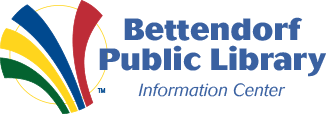Advancing Accessible Products and Inclusive Innovation – Clarivate

Report on Accessibility Initiatives and Alignment with Sustainable Development Goals
Introduction
This report outlines recent progress in Clarivate’s commitment to digital accessibility across its Academia & Government products. These initiatives are fundamentally aligned with several United Nations Sustainable Development Goals (SDGs), primarily focusing on ensuring inclusive and equitable access to information and promoting lifelong learning opportunities for all. Key contributions are made towards SDG 4 (Quality Education), SDG 10 (Reduced Inequalities), SDG 9 (Industry, Innovation, and Infrastructure), and SDG 17 (Partnerships for the Goals).
Advancements in Inclusive Product Design and Delivery
Enhancing Quality Education (SDG 4) and Reducing Inequalities (SDG 10)
Central to our strategy is the enhancement of product features to ensure equitable access for all users, thereby reducing digital barriers and supporting inclusive education.
- Accessibility Metadata for Ebooks: To support SDG 4, we have integrated accessibility metadata for ebooks on the LibCentral and Ebook Central platforms. This innovation allows users and administrators to identify content that meets specific accessibility needs, promoting inclusive learning environments and directly addressing SDG 10 by empowering users with disabilities.
- EPUB as Default Format: The transition to EPUB as the default reading experience on Ebook Central marks a significant step towards reducing inequality. As an HTML-based, reflowable format, EPUB offers superior support for assistive technologies, ensuring that educational content is accessible to a wider audience, including those with visual impairments.
- Inclusive Design Improvements: In products such as the Web of Science, design principles have been updated to enhance accessibility. By refining color usage for interactive elements and ensuring information is not conveyed by color alone, we are creating a more inclusive user experience that reduces barriers for individuals with color vision deficiencies, in line with the principles of SDG 10.
Fostering a Culture of Sustainable Innovation and Collaboration
Integrating “Born Accessible” Principles for Inclusive Innovation (SDG 9)
To deliver on our accessibility goals, we are embedding inclusive practices throughout the product lifecycle. This “shift left” approach ensures that accessibility is a foundational component of innovation, not an afterthought.
- “Born Accessible” Mindset: By incorporating accessibility into the earliest stages of development and making it a key release criterion, we are fostering a culture of inclusive innovation as championed by SDG 9. This includes targeted training for teams and the expansion of testing protocols to identify and mitigate accessibility barriers proactively.
Strengthening Partnerships for the Goals (SDG 17)
We recognize that systemic change requires collaboration. In alignment with SDG 17, we are deepening our engagement with the global accessibility community through strategic partnerships.
- Ecosystem Collaboration: Partnerships with organizations such as the DAISY Consortium’s Inclusive Publishing Partners initiative and the International Association of Accessibility Professionals (IAAP) are critical. These collaborations facilitate industry-wide dialogue and shared learning, accelerating progress towards a more accessible publishing ecosystem for all.
Forward-Looking Strategy and Continuous Improvement
Future Initiatives and Commitments
Our work is ongoing. The following initiatives represent key areas of focus for the upcoming year, demonstrating a sustained commitment to advancing the SDGs.
- Improving Roadmap Availability: To increase transparency, Accessibility Roadmaps detailing planned improvements will be made more readily available via the public Accessibility Directory.
- Known Issue Portal for Primo NDE: A new portal is in development to provide users with clear visibility into known accessibility issues and their remediation status, fostering trust and accountability.
- Ongoing Product Remediation: Continuous review and remediation of existing products will proceed alongside deeper integration of accessibility testing in new development. Future enhancements will explore AI-supported workflows and enriched metadata to further advance our contribution to SDG 9 and SDG 10.
- Community Feedback Integration: The Clarivate Accessibility Council will continue its cross-functional work to ensure community feedback is integrated into our strategic planning and execution.
Analysis of Sustainable Development Goals in the Article
-
Which SDGs are addressed or connected to the issues highlighted in the article?
The article addresses several Sustainable Development Goals (SDGs) through its focus on improving accessibility in digital academic and government products. The primary SDGs connected are:
- SDG 4: Quality Education: The article discusses products like “Ebook Central” and “Web of Science,” which are central to academia and research. By making these educational resources accessible, the company ensures that students and researchers with disabilities have equal opportunities to access information and learning materials.
- SDG 10: Reduced Inequalities: The core theme of the article is accessibility, which directly aims to reduce inequalities faced by persons with disabilities. The efforts to create “born accessible” products and provide features like accessibility metadata empower and promote the inclusion of all users, regardless of their physical or cognitive abilities.
- SDG 9: Industry, Innovation, and Infrastructure: The article highlights innovation in product design and infrastructure. This includes transitioning to accessible formats like EPUB, developing richer accessibility metadata, and integrating accessibility into the product lifecycle (“Shifting Left”). These actions represent an effort to build inclusive and sustainable digital infrastructure.
- SDG 17: Partnerships for the Goals: The article explicitly mentions forming partnerships to advance accessibility. It states, “We’re deepening our collaboration across the ecosystem by partnering with organizations such as the DAISY Consortium’s Inclusive Publishing Partners initiative, and the International Association of Accessibility Professionals.” This demonstrates a commitment to multi-stakeholder collaboration to achieve common goals.
-
What specific targets under those SDGs can be identified based on the article’s content?
Based on the article’s content, the following specific SDG targets can be identified:
- Target 4.5: “By 2030, eliminate gender disparities in education and ensure equal access to all levels of education and vocational training for the vulnerable, including persons with disabilities…” The article’s focus on making academic products like Ebook Central and Web of Science accessible directly supports this target by working to ensure users with disabilities have equal access to educational resources.
- Target 10.2: “By 2030, empower and promote the social, economic and political inclusion of all, irrespective of age, sex, disability, race, ethnicity, origin, religion or economic or other status.” The entire initiative described in the article, from providing accessibility metadata to adopting a “born accessible” mindset, is aimed at promoting the digital inclusion of people with disabilities.
- Target 9.c: “Significantly increase access to information and communications technology and strive to provide universal and affordable access to the Internet in least developed countries.” While not focused on LDCs, the article’s efforts align with the principle of increasing access to information and communications technology. By improving the accessibility of its digital platforms and content, the company is working towards universal access for persons with disabilities.
- Target 17.17: “Encourage and promote effective public, public-private and civil society partnerships, building on the experience and resourcing strategies of partnerships.” The article directly references this target by detailing its partnerships with civil society and industry organizations like the DAISY Consortium and the International Association of Accessibility Professionals to “further accessibility throughout the publishing ecosystem.”
-
Are there any indicators mentioned or implied in the article that can be used to measure progress towards the identified targets?
The article mentions or implies several indicators that can be used to measure progress:
- Availability of Accessibility Metadata: The article states that “accessibility metadata can be searched by admins on LibCentral and is provided in the book details for titles on Ebook Central.” An indicator of progress would be the percentage of ebooks in their portfolio that include this metadata.
- Adoption of Accessible Formats: The transition to “EPUB format as the default reading experience” is a measurable action. Progress can be tracked by the percentage of content offered in accessible, reflowable formats like EPUB versus less accessible formats like non-tagged PDFs.
- Integration of Accessibility into Product Development: The move to a “‘born accessible’ mindset” implies a process-based indicator. Progress could be measured by the percentage of new product releases that meet specific accessibility criteria from the outset, as confirmed by “tooling and test protocols.”
- Public Availability of Accessibility Information: The plan to publish Accessibility Roadmaps to the Accessibility Directory is a clear indicator of transparency and progress. The number of products with publicly available roadmaps and known issue portals can be tracked.
- Number of Strategic Partnerships: The article names specific collaborations with the DAISY Consortium and the International Association of Accessibility Professionals. An indicator of progress towards Target 17.17 is the number and depth of such partnerships aimed at improving industry-wide accessibility.
-
Create a table with three columns titled ‘SDGs, Targets and Indicators” to present the findings from analyzing the article. In this table, list the Sustainable Development Goals (SDGs), their corresponding targets, and the specific indicators identified in the article.
SDGs Targets Indicators SDG 4: Quality Education Target 4.5: Ensure equal access to all levels of education for the vulnerable, including persons with disabilities. Percentage of educational content (e.g., ebooks) available in accessible formats like EPUB as the default. SDG 10: Reduced Inequalities Target 10.2: Empower and promote the social inclusion of all, irrespective of disability. Percentage of digital products with searchable and detailed accessibility metadata available to users. SDG 9: Industry, Innovation, and Infrastructure Target 9.c: Significantly increase access to information and communications technology. Percentage of new product development workflows that have fully integrated a “born accessible” approach, including training and testing protocols. SDG 17: Partnerships for the Goals Target 17.17: Encourage and promote effective public-private and civil society partnerships. Number of active partnerships with accessibility-focused organizations (e.g., DAISY Consortium, International Association of Accessibility Professionals).
Source: clarivate.com
What is Your Reaction?
 Like
0
Like
0
 Dislike
0
Dislike
0
 Love
0
Love
0
 Funny
0
Funny
0
 Angry
0
Angry
0
 Sad
0
Sad
0
 Wow
0
Wow
0














































































